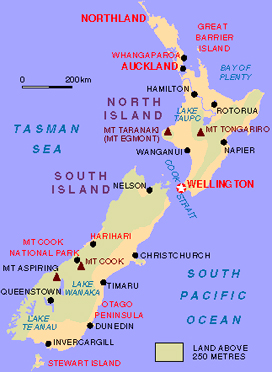| |


Until the 1970s much of the wine made was fortified and sold as "sherry" or "port", according to style and sweetness. In the 1960s and 1970s farmers - and not just winegrowers - were encouraged by the New Zealand government to plant spare land with vines and to treat them like any other commercial crop. (This explains the supply of many grapes for the industry today by con. tract growers.) At that time, more than two-thirds, of vines Were hybrids - produced by crossing American and European vines - although with governmental encouragement to plant, many poor-quality hybrids were dug up, and today hardly any remain.
Since the 1970s an increasing emphasis has been placed on table wines in New Zealand. And the wine industry continues to evolve. Only since the 1980s have vineyard areas been definitively established as suitable for particular grape varieties, and experimentation continues.
When the planting of European varieties took precedence over hybrids, it was decided to use German vines, particularly the white grape Muller-Thurgau. Growers realized slowly that the New Zealand climate resembles that of central France rather than Germany, and Sauvignon Blanc was introduced in the early 1970s, and Chardonnay in the mid-1980s. German grape varieties, which formed the basis of the production of inexpensive "cask", or "bag-in-box', wines (everyday wine in a plastic bag inside a box), are giving way to French ones which are considered the best varieties for New Zealand's distinctive wine styles. Among red grape varieties, Cabernet Sauvignon alone has a long history, having first been planted by wine pioneer James Busby.
Today, increases in production are largely determined by world markets. Wine exports increased sevenfold between 1987 and 1992, to 788,000 cases, worth NZ$34.7 million. They could be worth NZ$100 million by the year 2000, provided the vineyard increases by 2,000ha (4,950 acres) from the 5,790ha (14,300 acres) under cultivation in 1992. Meanwhile domestic consumption has remained relatively static at 4.8 million cases in 1992, or 17 bottles per head of the small population of around three million. New Zealand's future is as a quality, rather than volume, producer. It can easily compete with Australian wines in terms of quality but much less easily when it comes to price.
|
|
|
|




